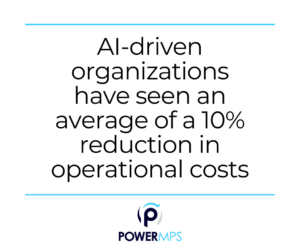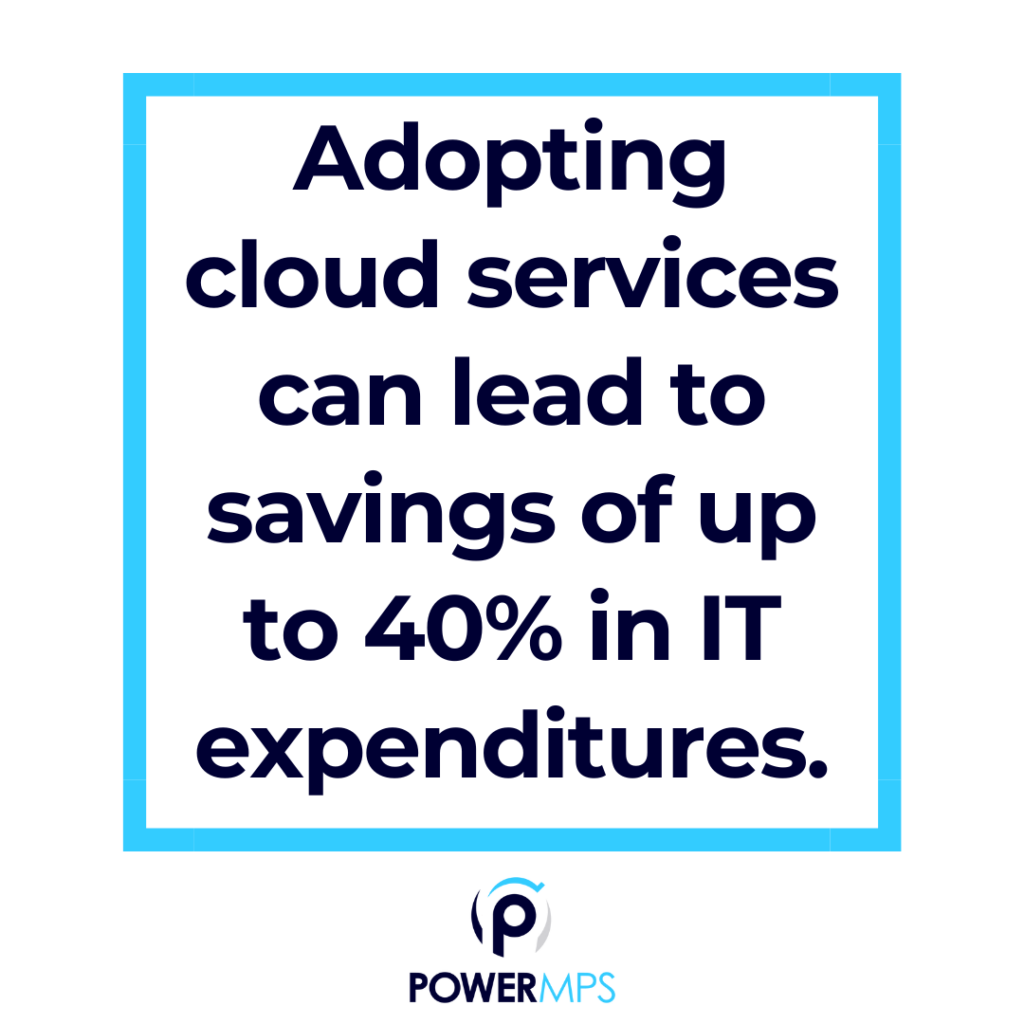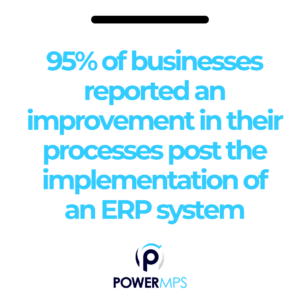Artificial Intelligence (AI) is rapidly reshaping the landscape of information technology departments across industries. This transformative technology brings both significant benefits and formidable challenges to IT professionals. In this blog post, we delve into the multifaceted impacts of AI on IT departments.
Optimizing Operations with AI

Artificial Intelligence is revolutionizing the efficiency and effectiveness of IT department operations. AI systems now increasingly manage routine tasks such as data correlation, network monitoring, and the identification of IT system malfunctions. Deloitte Insights reports that AI-driven organizations have seen an average of a 10% reduction in operational costs, a testament to AI’s role in streamlining processes.
This implementation of AI not only accelerates these processes but also reduces the chance of human error. As these automated systems handle repetitive, time-intensive tasks, IT professionals gain the freedom to direct their focus and creativity towards strategic initiatives, fostering innovation and driving the business forward.
Thanks to AI’s data-processing prowess, IT departments can handle the deluge of information with unprecedented efficiency. Predictive algorithms that can anticipate technical issues before they arise are transforming system maintenance, moving it from a reactive to a proactive stance. Such predictive maintenance not only reduces system downtime but also extends the lifespan of critical IT infrastructure. This foresight, powered by AI, ensures smoother operations and enhances the overall dependability of business technology systems, leading to improved end-user satisfaction and trust in IT capabilities.
AI’s Aid in Cybersecurity
The integration of AI into cybersecurity measures has been nothing short of a game-changer for IT departments. As cyber threats evolve in complexity and volume, traditional security measures alone no longer suffice. AI steps in as a dynamic ally, equipped with the capability to analyze patterns across vast datasets swiftly. This deep-level analysis allows for the early detection of potential threats and anomalous behavior, much before they can escalate into breaches.
The value of AI in this domain is underscored by a study from Capgemini, which highlights that over two-thirds of enterprises view AI as essential to combating cyber threats. The agility AI introduces to cybersecurity ensures that IT departments are always one step ahead in the digital arms race against cybercriminals.
AI is pivotal in scaling cybersecurity efforts as digital footprints expand exponentially. It can automate the response to detected threats, dramatically decreasing the time from discovery to resolution. AI-driven intrusion detection systems and automated security protocols actively mitigate risks, adapting in real time to emerging threats. This proactivity is indispensable because cybersecurity events can unfold rapidly, often with costly consequences. For IT departments around the globe, the employment of AI not only fortifies defense mechanisms but also instills a measure of confidence and control over their security posture.
Managing Talent and Skill Gaps
The rapid incorporation of AI within IT departments creates an unprecedented demand for a workforce fluent in AI technology. The necessity for talent that can develop, manage, and interpret these sophisticated systems is at an all-time high. A report by McKinsey & Company highlights a concerning gap, with 87% of organizations acknowledging either current skill gaps or anticipating them within the near future.
As AI evolves, the pressure mounts on IT departments to cultivate a workforce skilled in cutting-edge technologies. This involves sourcing new talent with specialized know-how and investing in the upskilling of existing staff—a process that can be time-consuming and expensive, yet crucial for staying ahead in the innovation race.
The disparity between the availability of AI professionals and the needs of the industry poses a significant challenge. The scarcity of skilled AI experts leads to a competitive market where poaching is common, and retention becomes difficult. For many IT departments, the solution involves a strategic investment in training programs and partnerships with educational institutions to develop the necessary skill sets in-house. Such initiatives are vital in closing the skill gap but also require ongoing investment to keep pace with the continuous advancements in AI technology. The onus is on IT departments to adapt to this new paradigm and become active contributors to the education and evolution of the AI workforce.
The Economic Impact of AI
Embracing AI within IT departments is having a measurable economic impact on businesses. AI technologies are known for automating complex and repetitive tasks, significantly reducing operational costs. A study by IBM revealed that implementing AI could potentially reduce IT costs by up to 30%, underscoring the financial benefits of leveraging artificial intelligence. These savings are accrued not just from labor cost reductions, but also from the increased speed and efficiency with which AI systems can perform tasks – often executing what would take humans multiple hours in a matter of minutes.
The economic advantages of AI extend beyond cost savings. By automating mundane tasks, IT professionals are liberated to tackle more strategic initiatives that can lead to additional revenue streams. The ripple effect of this shift is substantial, opening up opportunities for companies to innovate and grow. Within IT departments, the reallocation of resources made possible by AI adoption paves the way for new project development, ultimately contributing to a stronger, more competitive market position. These strategic advantages arguably equal, if not surpass, the immediate operational savings, marking AI’s profound economic influence.
Ethical Implications and AI Governance
The advent of AI in IT departments introduces a spectrum of ethical implications that need careful navigation. AI systems, by their nature, are often opaque, leading to challenges in understanding how decisions are made. This ‘black box’ dilemma necessitates IT departments to adopt a stringent governance framework to ensure transparency and fairness in AI operations.
The ethical deployment of AI becomes even more pressing when considering the potential for algorithmic bias, where AI systems may inadvertently perpetuate existing prejudices. This is highlighted by research indicating that almost 35% of businesses have experienced an AI ethics breach to some degree.
It is critical for IT departments to not only be stewards of technological efficiency but also of ethical integrity. The creation and enforcement of AI governance protocols are required to uphold accountability and prevent misuse of AI technologies. In the absence of universal standards for ethical AI use, IT departments are at the forefront of developing best practices that balance innovation with responsibility. Engaging with diverse stakeholder groups for insight and oversight assists in aligning AI initiatives with broader societal values, ensuring that as AI evolves, it does so with ethical considerations embedded in its core.
AI and the Evolution of IT Roles
AI’s permeation across IT operations fundamentally alters the roles and skill sets required within the department. As AI takes over routine and operational tasks, IT professionals need to pivot, focusing more on overseeing AI systems, understanding and interpreting data outputs, and strategizing based on AI-provided insights.
A survey by Accenture found that 74% of IT executives believe that AI will significantly change their jobs within the next three years, indicating the shift towards more strategic roles. This shift in responsibilities underscores the growing significance of cross-functional skills in areas such as AI management and data analytics, which are becoming as crucial as traditional IT skills.
In this evolving landscape, IT roles are transitioning from their traditional support stance to becoming integral contributors to business strategy and innovation. IT departments are increasingly expected to provide input that can shape product development, customer engagement strategies, and overall business direction. Therefore, IT employees must embrace lifelong learning and continuous skill development to stay relevant in their careers. As AI changes how IT departments operate, it also opens up new paths for professional growth and redefines the notion of what it means to work in IT.
In the face of rapid AI advancement, IT departments are navigating a transformative era of operational efficiency, enhanced security measures, and innovative role evolution. Despite the hurdles of talent shortages, ethical governance, and the need for perpetual upskilling, the potential for reduced costs, strategic growth, and proactive cyber defenses positions AI as a key driver of IT’s future. The journey ahead mandates a strategic, ethical, and adaptable approach—but the rewards for those IT departments that can successfully leverage AI’s power will be substantial, shaping not just their own future but the future of technology itself.













 The gig economy has ushered in an unparalleled level of agility within IT departments. With a prevailing 36% of U.S. workers taking part in gig-related endeavors, either as their primary or secondary form of employment, IT departments are presented with a unique set of opportunities and challenges. This environment allows these departments to respond enthusiastically to shifting project demands and technological advancements, adapting their workforce composition as needed without the constraints of traditional employment models.
The gig economy has ushered in an unparalleled level of agility within IT departments. With a prevailing 36% of U.S. workers taking part in gig-related endeavors, either as their primary or secondary form of employment, IT departments are presented with a unique set of opportunities and challenges. This environment allows these departments to respond enthusiastically to shifting project demands and technological advancements, adapting their workforce composition as needed without the constraints of traditional employment models.
